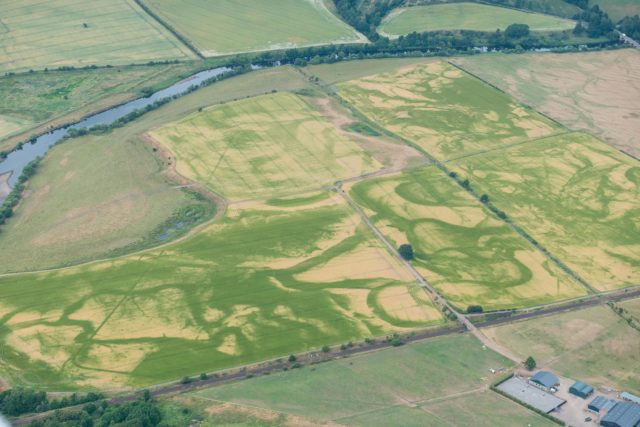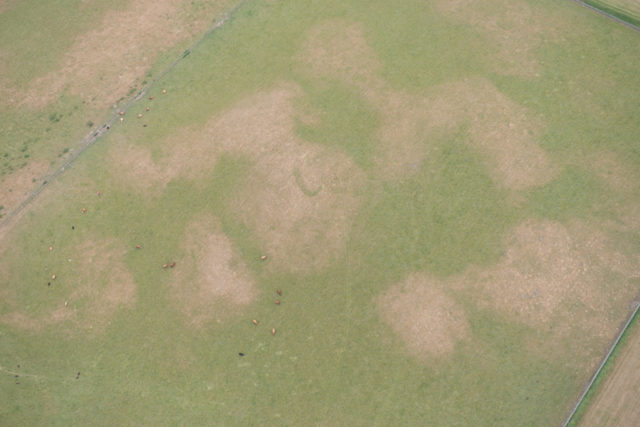Heatwave reveals new evidence of ancient settlements
The sites documented from the air by a team from Historic Environment Scotland are usually hidden under the plough soil.

Ancient settlements, burial sites and waterways have been revealed by aerial surveyors studying crop marks during the summer heatwave.
The sites, documented by a team from Historic Environment Scotland, are usually hidden under the plough soil but have been made visible as the crops respond to recent dry conditions.
New discoveries include Iron Age souterrains in the Borders, a rare find in this part of Scotland, and a Roman temporary camp discovered in the known Roman complex of sites at Lyne near Peebles.

More than 9,000 buried sites have so far been discovered by the aerial survey team, which searches Scotland from the sky in order to understand and record the historic environment.
Dave Cowley, aerial survey project manager at Historic Environment Scotland, said: “Aerial surveys of Scotland have been carried out since the 1930s, with each year usually adding a little more to the patchwork of our knowledge.

“The conditions this year are showing us many sites that we knew were there, but may not have seen in recent damp summers, as well as revealing new archaeological sites that add to our ability to see into the past to tell Scotland’s story.”





